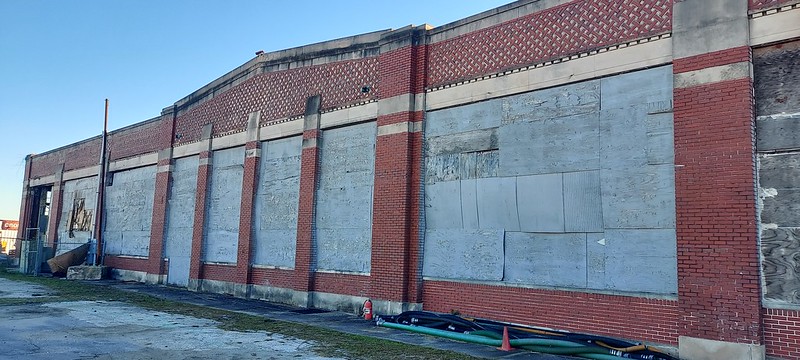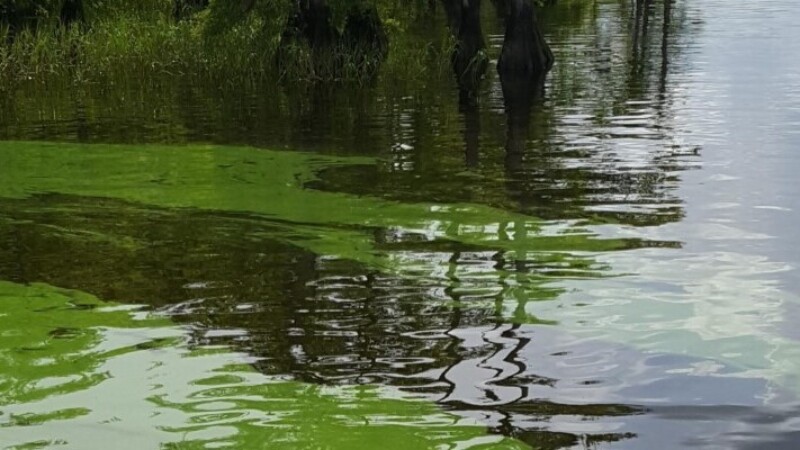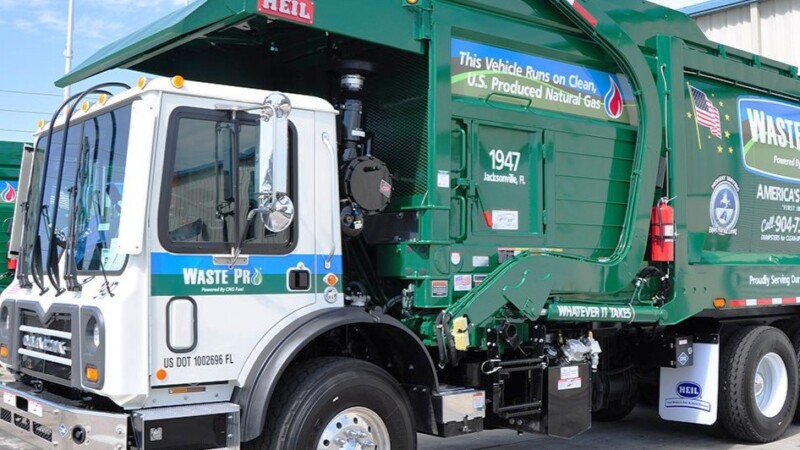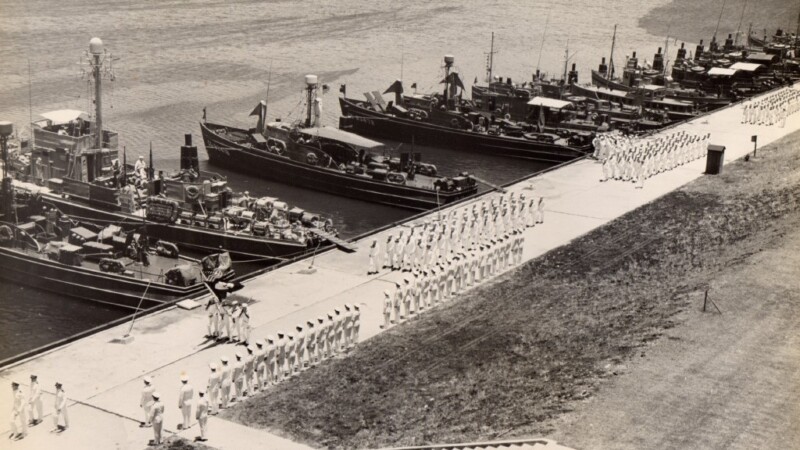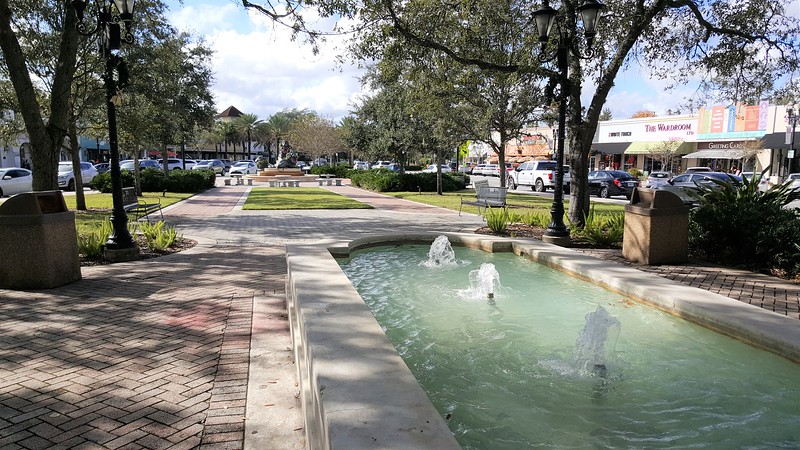
In the debate over the fate of the old Ford Motor Co. Assembly Plant in Talleyrand, east of Downtown, Jacksonville’s city leaders missed a huge opportunity: partial preservation of the plant or its outbuildings could have celebrated the site’s history while making room for a new use and jobs. The city’s decision to allow complete demolition is the latest example of a critical lack of vision and imagination.
The background: Jacksonville’s Ford Motor Co. Assembly Plant

The Ford Motor Co. Assembly Plant on Jacksonville’s working waterfront in the Talleyrand area dates back to 1923. That year the Ford Motor Co., then the world’s largest automobile manufacturer, purchased the former Bentley Shipyard site for the construction of one of its satellite factories. Designed by renowned industrial architect Albert Kahn, it was one of several satellites that Ford constructed in North America and Europe. The $2 million complex included a 115,200-square-foot factory built partly on a wharf. The western end of the building had offices, a parts department and a showroom. The facility also included a 100,000-gallon water tower for fire protection, an oil house, a screen house and a powerhouse with two 225-horsepower boilers. The factory was ready for operations on August 29, 1924, and immediately its workers set to cranking out Ford’s signature car, the Model T.
Jacksonville’s Ford plant expanded several times through the 1920s to meet booming demand; ultimately it employed 800 workers who could produce up to 200 cars a day. The Great Depression reversed the factory’s economic fortunes, though, and Ford converted the facility from manufacturing into the parts distribution center for its Southeastern region. In 1968, Ford moved its parts distribution to newer warehouses in Westside Jacksonville and Orlando, and a series of companies took up shop in the historic assembly plant. By the 1990s it was owned by the marine firm Wood-Hopkins Contracting Co., which used the old factory for construction storage.
Wood-Hopkins moved out in 2000, and subsequently a number of major pushes to preserve and redevelop the historic Ford factory emerged. Potential buyers pitched converting the facility into a mixed-use development, a marina and a cruise ship terminal, but none of these came to fruition.
In 2015, the Miami-based developer Amkin Hill Street LLC acquired the site along with 35 adjacent acres. In 2022, Amkin Hill announced it was in negotiations to lease the site to a shipyard company that wanted to convert the site into a state-of-the-art repair facility for U.S. Navy vessels (it’s thought the prospective tenant is Fincantieri Marine Systems, which operates the shipyard immediately to the south and has announced plans to expand). Arguing that the historic factory was too expensive to preserve, Amkin Hill began pursuing a permit to demolish the buildings.
Razing history

Amkin Hill couldn’t just demolish the Ford plant, as its former owner designated it a local landmark in 2003. Additionally, the Jacksonville Historic Preservation Commission denied Amkin Hill a certificate of appropriateness to tear down the structure due to its historical value and the fact that the owners hadn’t shown it was at risk of collapse. However, in October 2022, the Jacksonville City Council overruled the HPC, enabling demolition to commence.
Jacksonville has a long history of going Godzilla on its architectural heritage, to the point that Downtown Jacksonville has far more parking craters and dead space than actual buildings and the surrounding Urban Core neighborhoods lost 50% of their population between 1950 and 2010. Given the Ford plant’s major historical significance, it became a rallying point for citizens interested in preserving the city’s heritage.

Still, all parties acknowledge that saving the Ford plant would be a herculean task. The part of the factory building on the wharf has deteriorated substantially from years of neglect. The owner’s report showed 100% loss in some sections as well as loss of fill dirt under the building. The Jacksonville Historical Society and the city of Jacksonville’s planning office conceded that this eastern portion is probably past the point of saving.
Additionally, it’s certainly true that a new shipyard facility in this long-disused industrial space could be a tremendous asset to Jacksonville. According to the owners, the new use could bring up to 300 jobs and millions of dollars in investment to the waterfront. In fact, such a conversion would be a return to a historical use for the site, which was a shipyard before the Ford plant was built — if it actually happens.
But these facts miss a key point: This didn’t have to be an either/or situation. Partial preservation could have saved some of this important history while still allowing redevelopment to bring life back to the waterfront. Jacksonville could have better, but as in most of Jacksonville’s deep-rooted problems, the real problem is a lack of vision.
A dearth of vision

Even allowing that much of the building would need to come down, either because of its condition or to build something new, there are a number of ways partial preservation could have worked. That’s because (1) not all of the factory is beyond repair, and (2) the factory isn’t the only building on the site.
The western portion of the building with the offices is on dry land and is not in as dire shape as the eastern side. The Jacksonville Historical Society and other advocates argue that it was still salvageable, although such a project would take many millions of dollars. Additionally, the building wouldn’t be a fit for a shipyard (again, if this happens).
But partial preservation would still be possible even if every portion of the main building were razed. Immediately to the north of the main assembly plant, a significantly smaller structure known as the Oil House still stands. A key supporting facility of early Ford assembly plants, the oil house was originally constructed for the storage of fuel oil for the boilers, as well as flammable liquids such as paints and thinners used in the automobile assembly process. This structure is about 6,900 square feet and it’s situated completely on dry land.

Saving at least this structure would be completely manageable; it has the same historic narrative and link back to Albert Kahn and Ford, but without the significant challenges faced with the larger assembly structure. The building would also be perfectly suitable for a shipyard, as it could be adapted for all types of uses, such as a support warehouse structure, offices, maritime uses or even a waterfront restaurant. A similar structure in Richmond, California, a former Ford plant boiler house, has been adapted for just that use. Again, all it takes is vision, and while Jacksonville’s city government isn’t exactly renowned for that, we now have many local examples showing it can work.
When we put money behind these kinds of projects, they can actually get done. In the Downtown Northbank, relatively minor incentives have led to a veritable renaissance of adaptive reuse projects that are converting old buildings for new uses. We’re seeing this now with the Old Federal Reserve Bank, the Florida Baptist Convention Building, Ambassador Hotel, Jones Brothers Furniture and Old Independent Life Building, to name a few.
As such, we have the answer to our lack of vision right in front of us. It’s just a matter of acting on what’s already proven to work.


